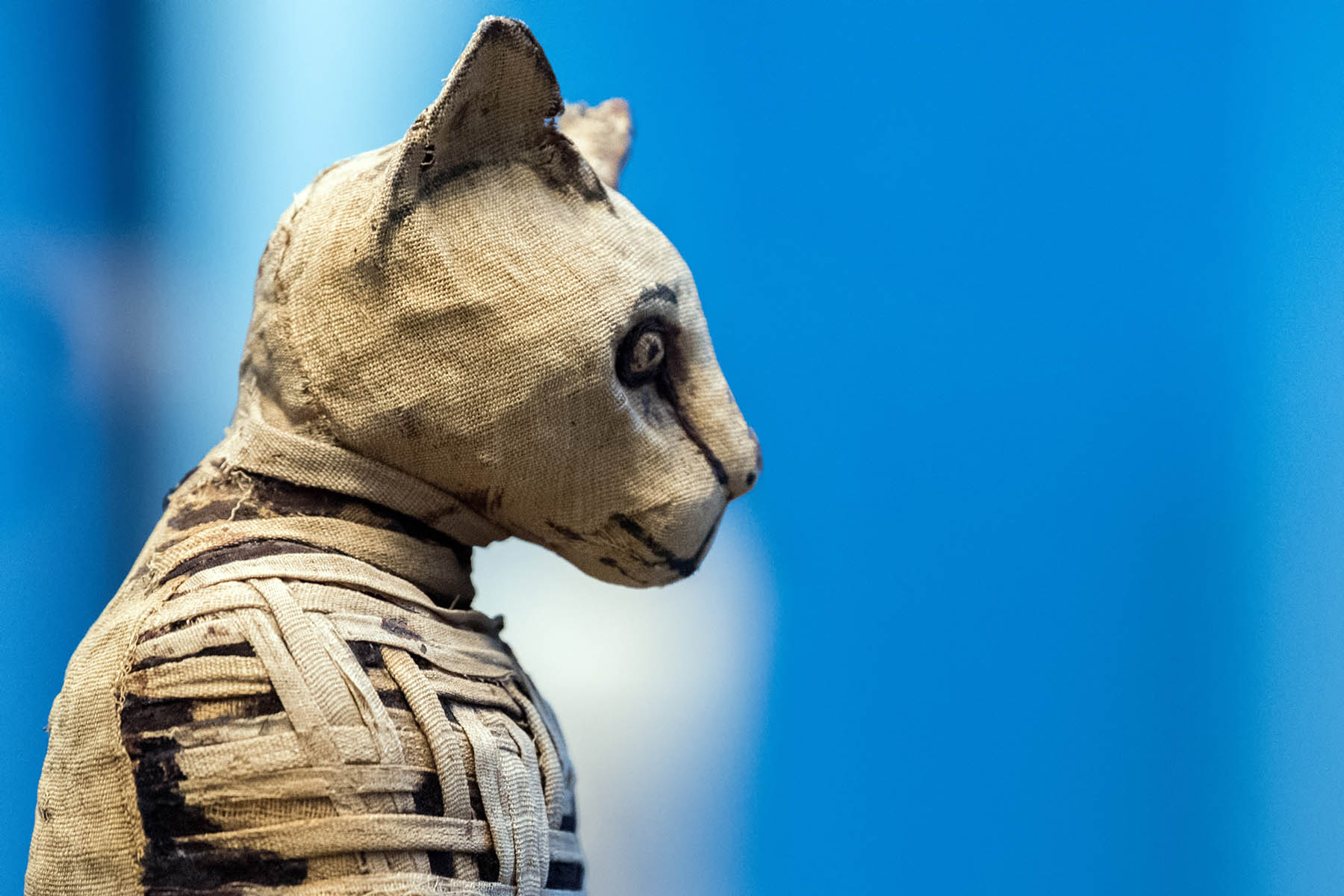Animal mummies
Learn about the mummification of animals in ancient Egypt, including how modern mummies are made in the lab and how we study ancient mummies at the hospital.
For our younger visitors, why not take a look at the animal mummy fact sheets and try out the quizzes to test how much of a mummy expert you are?
Please be aware that the resources may contain images of ancient mummified remains and skeletons.

Resource packs
These packs are suitable for pre-school and school-aged children and provide lots of information and activities on animal mummies. They can be worked through either with family or at school.
We invite teachers to use the material to help inspire the next generation of mummy scientists!
- Animal mummies revealed (PDF, 1.4MB)
- Gifts for the gods (PDF, 1.6MB)
Animal mummies under the microscope
Take a look at animal mummies through a microscope lens. Have you ever wondered how scientists know how animal bodies are treated during mummification? These slides will provide some clues!
Suitable for: Key stage 3 onwards
How to scan an animal mummy
Accompany our animal mummy specialists to the Manchester Children’s Hospital and see for yourself how mummies are studied using the latest imaging technology.
From their arrival at the doors of the accident and emergency department to the interpretation of the data, animal mummies are unique patients that often reveal surprising results.
Suitable for: Key stage 3 onwards
How to make an animal mummy
Join mummy experts Lidija and Stephanie as they show you how a bird of prey could be mummified.
Learn about the various ingredients used in the process and what they tell us about life and trade in ancient Egypt.
Suitable for: Key stage 4 onwards
Manchester Museum’s crocodile mummy
Get a closer look at Manchester Museum’s largest animal mummy – an unwrapped crocodile mummy.
Using data from CT scans, scientists are able to look inside the mummy without damaging it. Take a look at this virtual reconstruction created from the scan data.
Suitable for: Key stage 2 onwards
